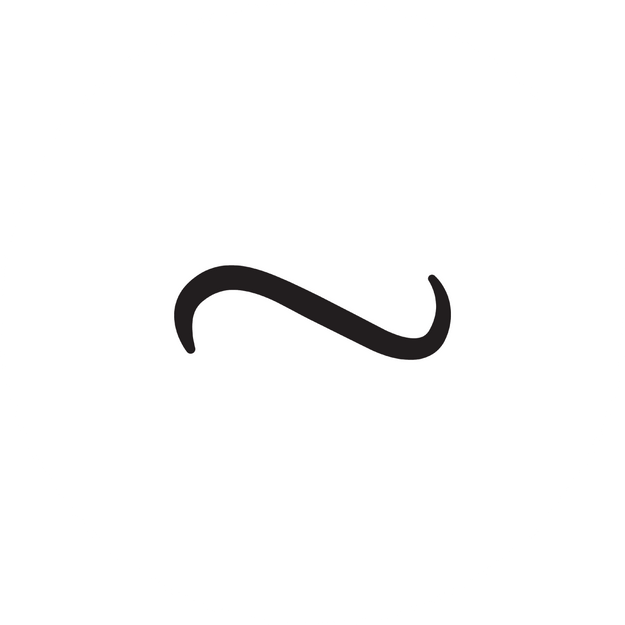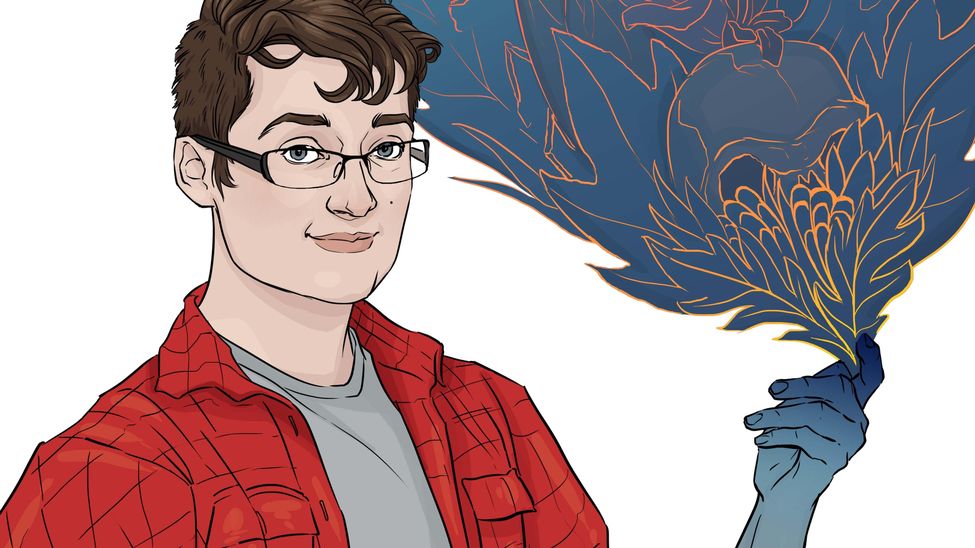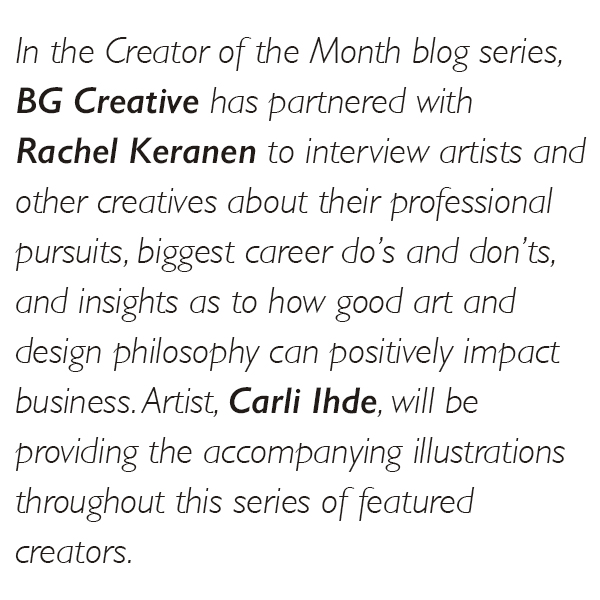
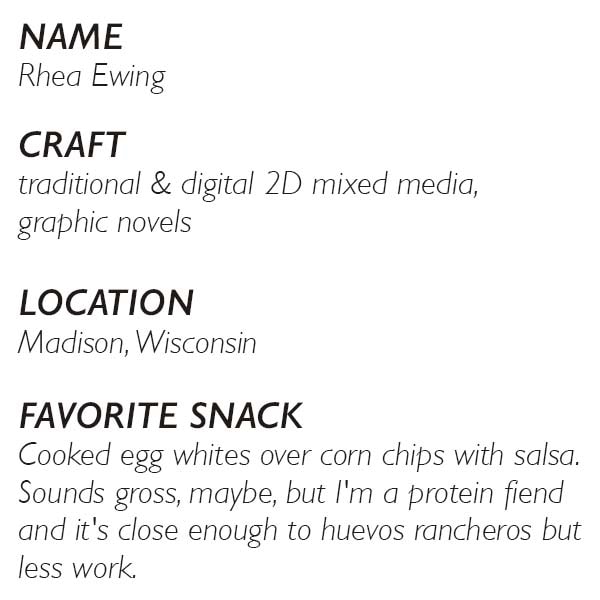
What sort of art or design do you do?
I make mixed media pieces that combine digital and traditional media. Traditional media I work with are things like paint and ink and pencils. Digital media I work with includes tools like using a digital drawing tablet, ClipStudio, and a modern Inkjet printer. I really like working back and forth across mixed media. I feel like this kind of dovetails with a lot of the ideas behind my work.
Whether through my comics or my fine arts work, I’m really interested in the way we look for human narratives and common narratives in things, especially in nature. For example, the way we might look at prehistoric life and fossils and project our own examples on to those. For more modern examples, how we might look for allegories for how humans should behave? Sometimes those allegories work really well, and sometimes they get in the way.
How long have you been doing this kind of work?
Since 2012. When I was a student I figured I would end up supporting my fine arts work with my work in comics and graphic design. It ended up being the opposite. It’s really surprising to me!
How did you get to the level of success you have today? (Major milestones, etc.)
It’s a little bit embarrassing. In the early days I took every freelance job I could find. I did a lot of work where I was either working at either just minimum wage or less than minimum wage. I was working these absurd work weeks of 80 or 90 hours of work a week and just able to pay the bills at the end of the month. Sometimes I had to ask for help from my parents or other resources. I wasn’t getting enough rest; my social life was a mess.
There’s a culture in design and illustration and the world of artists trying to make it as a business that’s like, “Oh, if you just work really, really hard you can do it. If you aren’t working really, really hard, you must not want it badly enough.” I think that can be really toxic, especially as someone who struggles with depression and anxiety.
I took a step back. I moved back in my with my parents for a couple of years to reassess what I was doing and how I could live a balanced life while still creating work I was proud of. Now, people approach me and I’m able to set my prices and I have a much better sense of what my time is worth, how to price my work, and things like that. It took a lot of learning things the hard way. That’s why in my career now I’m very focused on helping younger artists learn those lessons in a gentler fashion.
What project(s) are you most proud of and why?
One is a coloring book that I produced last year, funded through Kickstarter. It’s called 7 Strengths: A Coloring Book for Resiliency. Coloring books allow me to incorporate a lot of my interest and values. There are artist statements, elaborate line work, and it makes my work really accessible to most people.
On the other side of that spectrum is a piece that I did called “Invisible Only to You.” It’s six feet wide and three feet tall — it does not fit into my car. It has a custom printed fabric design and from this background a large figure emerges, made up of large digital prints and paints and drawings. That piece is about marginalized community, and I’m really happy with how it came together and the messages within it.
The thing is, “Invisible Only to You” is very expensive. I personally can’t afford to buy a $10,000 piece of artwork with my income, so it has a very different audience. Given the size of it, it needs to be in an art gallery or other large space where fewer people have access to it. I think about access a lot in my work. Even though I’m proud of how this piece turned out and the way it pushed my skill sets to make, it can’t reach people in the same way as a coloring book could. Regardless of the type of work you do, I feel it’s important for artists to take a realistic look at how their work can reach an audience.
The project I’m currently working on is a graphic novel about gender in the Midwest. It’s based on interviews from people all over the Midwest. You can read more about it here.
What are your favorite motifs or symbols to include in your work?
Hands. A lot of people will say human hands are the hardest thing to draw. It’s because they’re very posable, complex, and expressive. It makes it hard to draw, but you can also do a lot with them.
I use human hands in my work to signify that I’m talking about human ideas or human elements without necessarily having people get stuck on “Who is this person.” When you draw a portrait of a human face, people wonder “How old is this person, do they live near me, do they look like me, what gender are they?” Those aren’t questions that I necessarily want to be tackling in those pieces, but I want people to think about these larger ideas of humanity.
What are some of the big professionals do’s and don’ts you’ve learned along the way?
The biggest thing I would say is to make sure that you have a plan, some kind of plan for how things are going to actually work. There’s a quote I like, “Follow your dreams, but do the math.” (I saw it on Iron_Spike’s Twitter and don’t know the original attribution.)
Remember you’re a person first. You need time to spend with your family, you need to take time off if you’re sick, you need time to take care of yourself and any dependents you have, whether that’s pets or children. You need to have a business plan that allows you to be a whole person. Working 60, 70 hours a week, nobody can sustain that. I think we’re all better artists if we treat ourselves well first.
If you could tell people who are new to their creative careers or hitting a roadblock one thing, what would it be?
When I was a college student, I was dealing with a lot of anxiety that often interfered with my work. I wrote an artist I really admired asking, “How do you not stress out all the time while you’re doing all this work?”
They told me, “If it stresses you out, just don’t do it. Why don’t you just quit?” This was somewhat heartbreaking to hear.I never would tell an artist that in the way I received it.
But it did get me thinking about why I was doing what I’m doing. As artists, we’re making work because we want to explore and express ideas. You don’t have to be the world’s greatest artist, you just need to communicate with your audience. There’s lots of ways to do that.
If you can quit but you just really, really don’t want to, then don’t! What I would recommend is that if you’re finding yourself in a place where even things that are important to you, things that you used to enjoy, become a point of stress in your life, take a step back and take care of your mental health. That might mean talking to your doctor or finding a therapist. Do it! You and your work will be better off for it.
How does good design, really creative design, impact a business?
Design is communication, so great design clearly delivers a message to potential customers, employees, and even higher-up decision makers.
I also think that it’s important to know that effective, creative design is powerful, and needs to be used carefully. Are you sending a message that is actually reflective of what your business and values are? Does it exploit vulnerable people or empower them? Are you equipped to tell the difference? As creative people, it’s very important for us to be thoughtful about our projects and how they might impact society. Art has teeth, whether you acknowledge them or not.
How have you been able to see that or measure that impact in your career?
For me, I measure my success by the role my art serves in the community, not just for businesses. A mural that gets people thinking about the value of their local ecology. A book cover that gets everyone to take the ideas within more seriously. Art events that allow people to make valuable connections, sharing resources and ideas.
I think it’s also important to measure your impact by where your work is not positively impactful. There are projects out there that seem good on the surface but upon examining their impact further they haven’t necessarily been thought through. In one example, the company who approached me wasn’t being malicious, but they hadn’t considered how disabled people in their audience would respond to their campaign and the call to action. Once I brought my concerns up, the project shifted and my services were no longer needed. It was tough to find myself in that position, but I’m glad I did. They’ve since taken other approaches to solving the same problem that seem much healthier and more holistic for the community at large.
Are there examples of that kind of impact outside of your own experience that you admire?
Artist residencies that allow for direct community interaction have produced some really exciting results. The Madison Public Library’s artist residence has had a number of interesting and sometimes challenging projects. Jenie Gao did a project on unity, migration, and collaboration that was pretty neat and you can still see it there today.
How do you think the creative industry will change in the next few years or decades?
Honestly, I have no idea. I have my hopes and dreams regarding arts and businesses working collaboratively, beyond patron-artist relationships, to address real needs in our communities. Real funding for the arts that allows us to hear from people who aren’t in the position to volunteer their time or work for awful pay. That’s just a hope though, not a prediction. To be honest, the larger events of the last few years have made me too pessimistic to answer this question.
Who do you follow for inspiration and through what medium? (Instagram, podcast, etc.)
Alaura Borealis‘ social artworks are a big inspiration for me, I also enjoy Lynda Barry‘s work in teaching comics and workshops that encourage people to embrace the act of drawing and what we can learn from our own process. Jenie Gao is another amazing artist, and she’s incredibly thoughtful as to how art, community, design, and business can work together in positive ways.
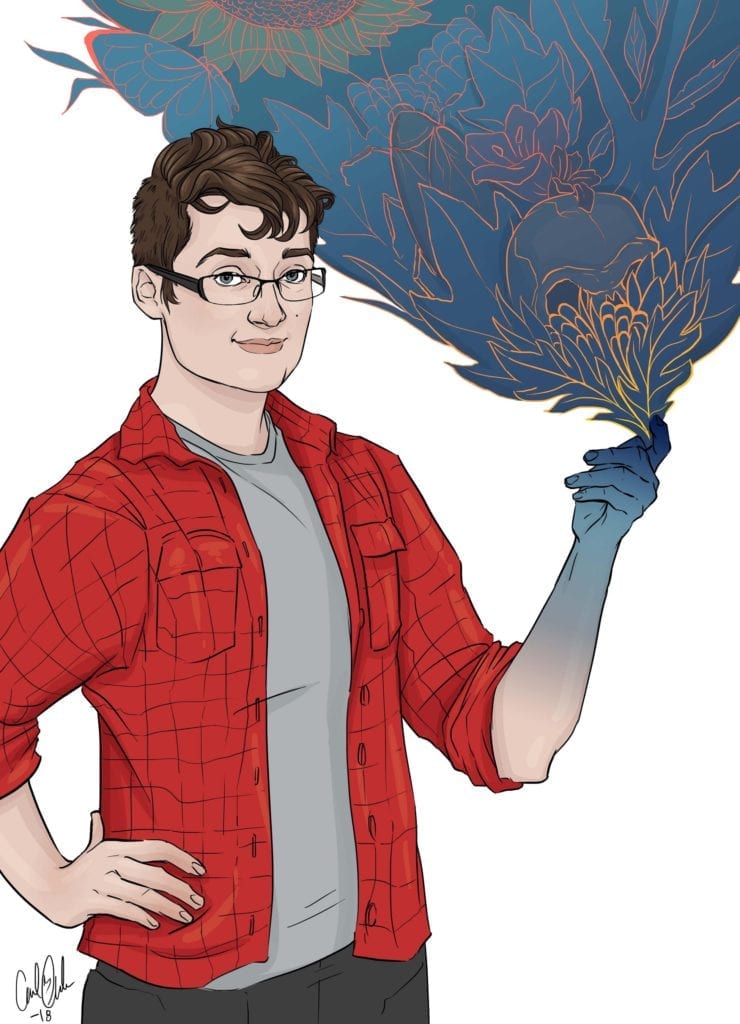
—
Author: Rachel Keranen | @river_rach
Illustrator: Carli Ihde | @carlieyed
Creator of the Month: Rhea Ewing | @rhea.ewing
Check out all the interviews and illustrations here.
